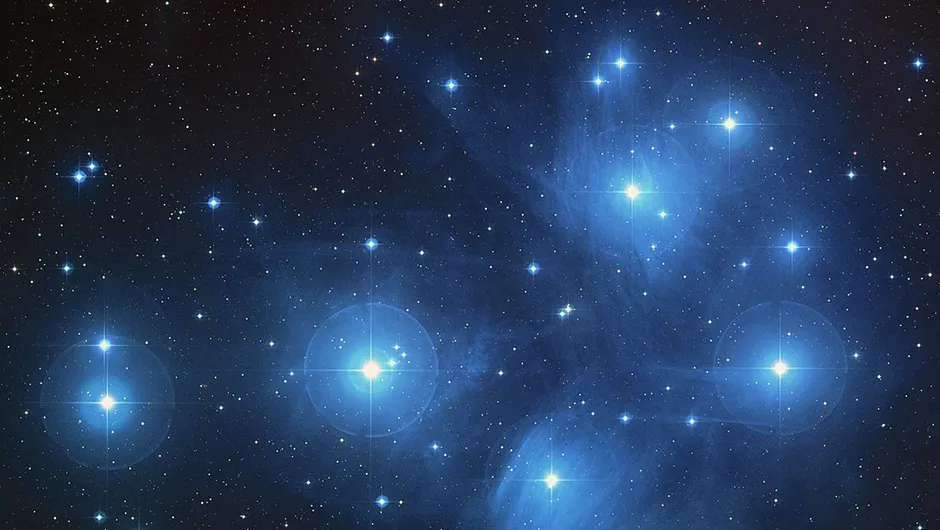Aboriginal Australians may be the world’s first astronomers, as stargazing plays a crucial part in the ancient cultures of the 300 or so Aboriginal communities.
Some Aboriginal elders can name almost every one of the 3,000 stars that are visible to the naked eye.
They can point out the ecliptic along which the planets travel.
They carry an intuitive map of the sky in their heads, so that a quick glance at the night sky tells them the time and the direction in which they’re travelling.
Of course, this knowledge doesn’t come easily.
An elder spends a large chunk of their life memorising information that’s been passed on from generation to generation.
Read our guide to the best night-sky targets to see in Australia and find out what's visible in the Southern Hemisphere night sky tonight.

Credit: iStock
A sky full of stories
With every star comes a story and, as in Europe, the stars are often grouped into constellations.
Some are similar to ours: Scorpius is seen as a scorpion in some parts of Australia and a crocodile in others.
Some are different, such as the ‘Emu in the Sky’ constellation, which is actually made of the dark space between stars caused by clouds of interstellar dust in the Milky Way.
The head of the emu is the Coalsack Nebula, next to the Southern Cross, and its body is marked by black clouds along the Milky Way, up through Scorpius and down the other side of the sky.

Today’s emus are flightless, but they used to fly back in the Dreaming, the mystical time when Aboriginal cultures believe creator spirits roamed Earth, which is why the emu in the constellation is soaring across the sky.
Curiously, the Pleiades, or Seven Sisters from Greek mythology, are also called ‘Seven Sisters’ in many Aboriginal languages, which is odd because, depending on your eyesight, you may see five, six or many stars in the Pleiades, but nobody sees seven.
It’s a mystery why they’re called the Seven Sisters and a double mystery why they’re called that in both the Greek and Aboriginal traditions.
Most Aboriginal cultures see Orion as a hunter, a young man or a group of young men chasing the Seven Sisters, just as in the Greek story.
So why is the Aboriginal story so similar to that of the Greeks given that there was almost no contact, even indirectly, between the two cultures?
Perhaps it pre-dates both cultures, going back to campfire tales told in Africa around 100,000 BC, before the ancestors of all modern humans spread over the globe.
Practical applications
Aboriginal people used astronomy to navigate and define their calendars.
For example, the calendar of the Yolngu people in northern Australia has six seasons.
The start of winter is marked by the first appearance at dawn (the heliacal rising) of the Pleiades, while the heliacal rising of Arcturus marks the time when lotus and water chestnut roots should be harvested.
Songs and stories also show that Aboriginal thinkers tried to figure out how the sky works.
There are many stories that tell how the Sun-woman travels from east to west across the sky each day and then returns to her camp at night.
How does she get back? Some say it’s under the water, some say through a tunnel, some say she takes a path beyond the northern horizon.
Enigmatically, one group says she goes underneath Earth, implying they know that it’s a body in space.
I call these stories ‘ethno-science’ as they’re similar to science in that they’re attempts to understand the world, but couched in terms of a particular culture.
There are many examples of ethno-science, one of which tries to explain what causes a solar eclipse.
Some groups say it’s caused by the Moon-man and the Sun-woman making love – his body covers hers, so you can’t see the Sun.
It’s remarkably close to the modern scientific explanation of the Sun being obscured by the Moon.
What about tides? One Aboriginal explanation is that, as the Moon rises through the ocean on the east coast of Australia, it alternately fills and empties with water.
That’s why the highest tides occur at full Moon and new Moon, and smaller tides are seen at the quarter Moon, when the Moon only half fills with water.
The model might seem a little odd, but it works.
Given the limited information available to its originators, it’s a perfectly good scientific hypothesis.
The evidence for Aboriginal astronomy goes beyond word of mouth.
We see it in ancient rock art as well, and some stone arrangements seem to be laid out astronomically to a precision of a few degrees.
The Wurdi Youang stone arrangement, built by the Wathaurung people in Victoria hundreds or thousands of years ago, has been carefully built to point towards the setting Sun at midwinter, midsummer and the equinoxes.
My guess is that Wurdi Youang is just the tip of the iceberg and much more remains to be discovered that will open our eyes to the depth and complexity of Aboriginal culture.
Prof Ray Norris is an astronomer with CSIRO Astronomy & Space Science and Western Sydney University
